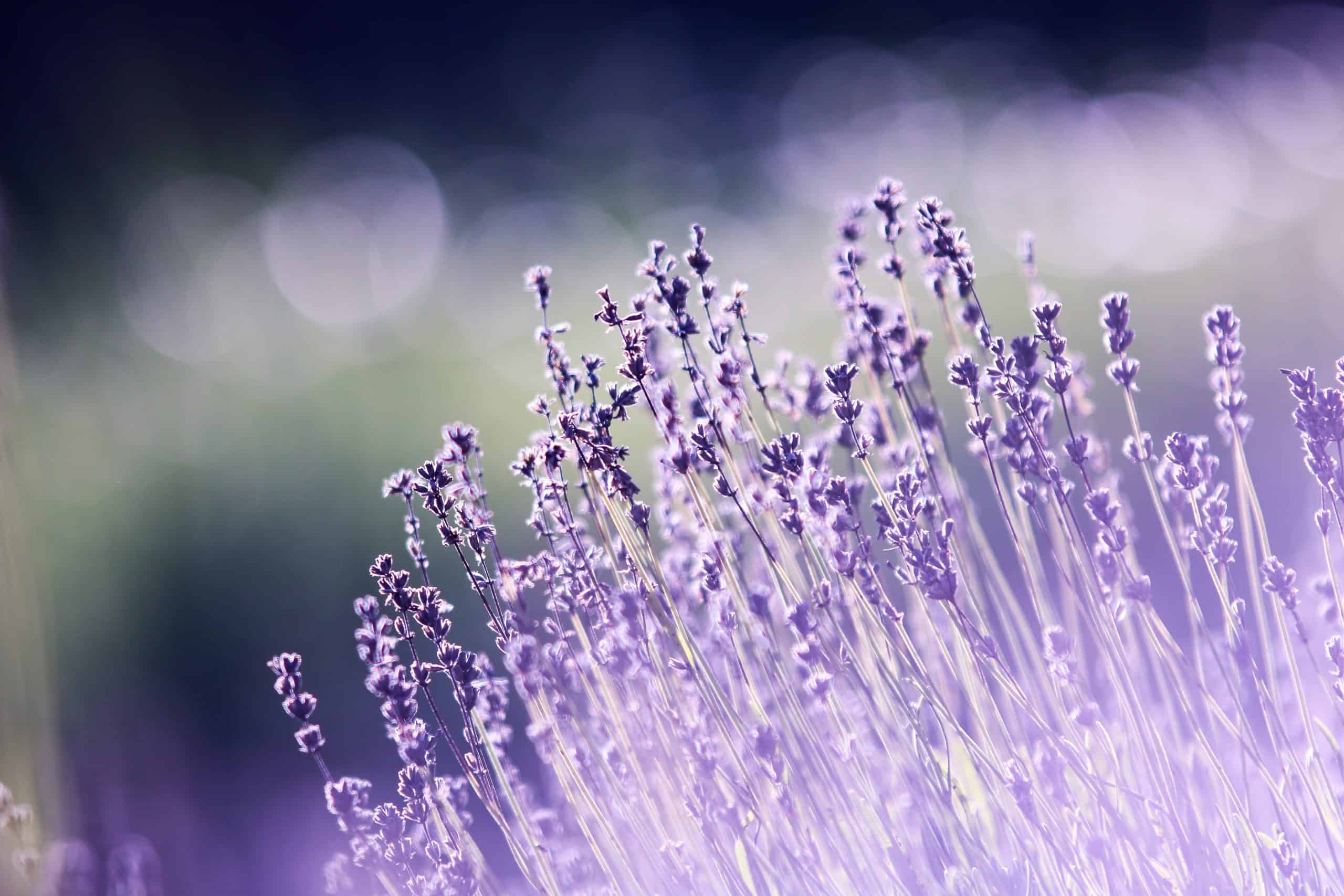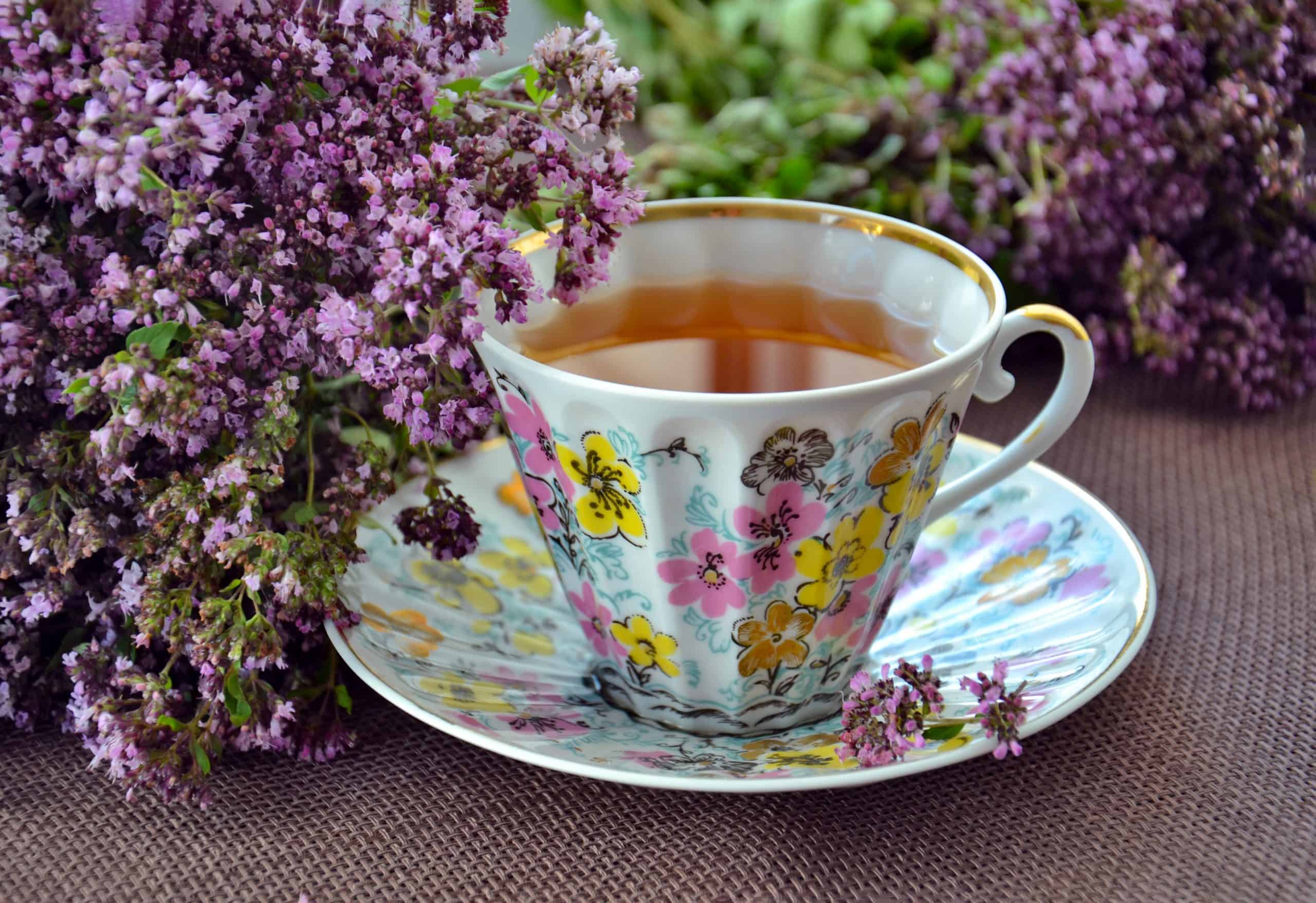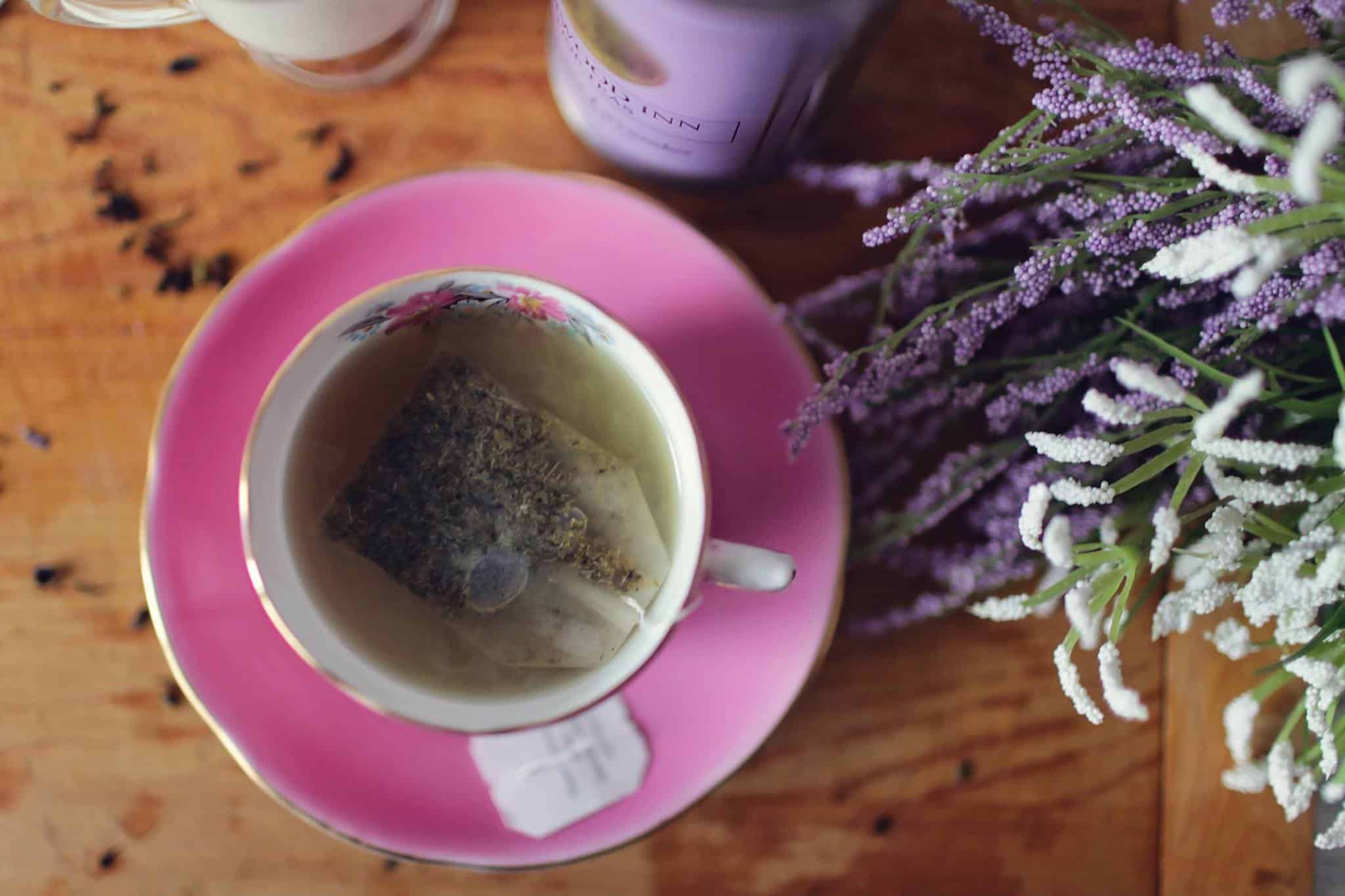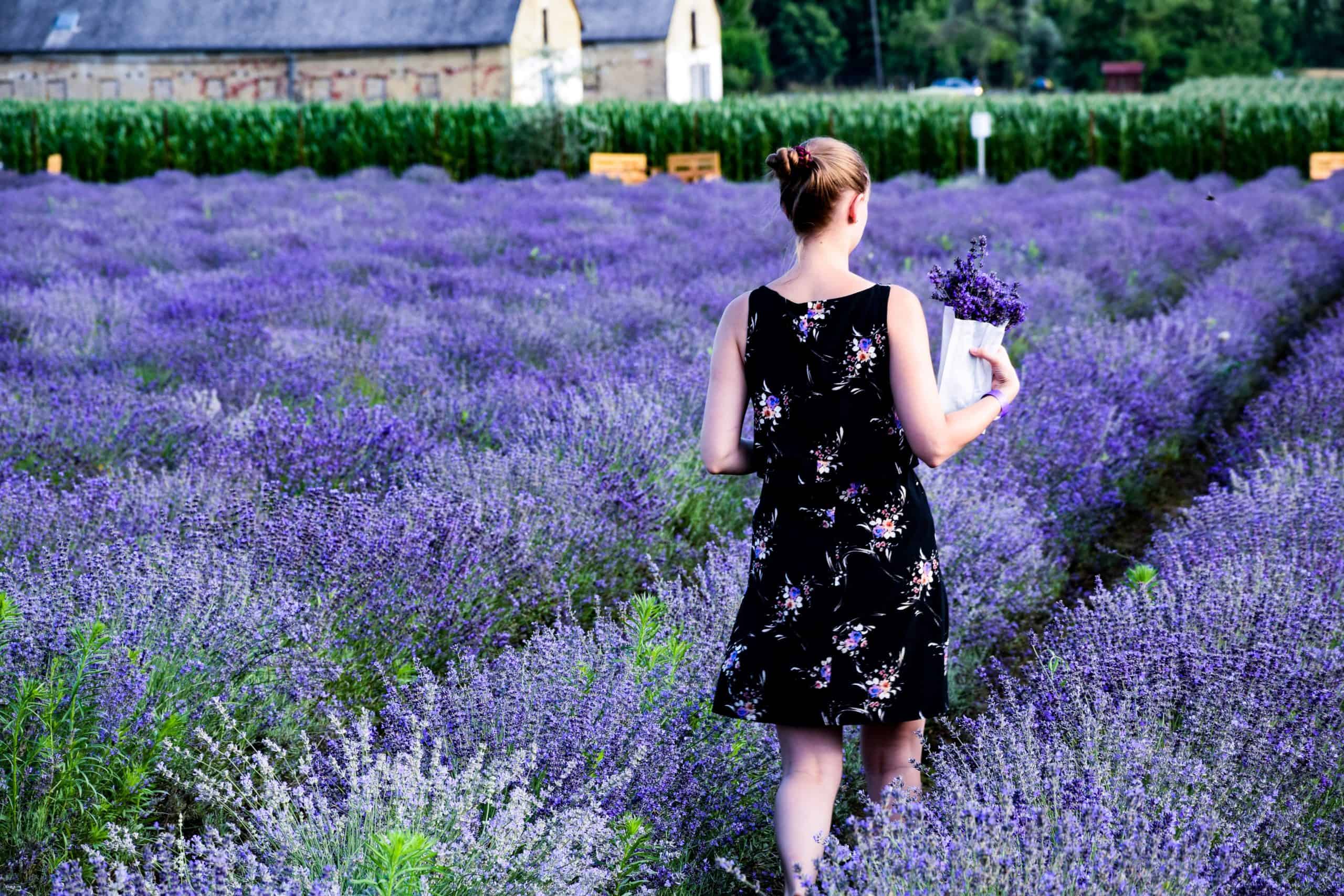I work long days and relaxing is always on the top of my list. One of the best ways I like to relax is with a cup in my hand and meditation on my heart. The scent and benefits of lavender tea are one of the most relaxing scents known. Not only can a cup of lavender tea relax you but so can the scent. Breath deep as we dive deep into relaxing calming lavender tea. I’ve created a long list of one minute video’s on the benefits of herbs. Here’s lavender.
History of lavender
Lavender is one of the most common flowers used in aromatherapy. Why? Because of its relaxing quality. It soothes the mind and the soul. Not only by sipping a cup of lavender tea but by breathing deep the aroma that is created by that cup.
The history of lavender goes back 2500 years. Lavender originates from the mountain areas of the Mediterranean, the Middle East, and India. Lavender is part of the mint family. Its species name is Lavandula.
The name lavender translates to “to wash” which may be from being called lavare by the Romans. Lavender was used in Roman bathhouses as well as used to mummification in ancient Egypt. Cleopatra was rumored to have seduced Caesar and Mark Anthony with lavender. Lavender was considered an herb of love.
Lavender is also used in foods as well as pressed into an essential oil. Lavender is also used to create candles, potpourri, soaps, shaving creams, linen sprays, cleaning supplies, and more.

Features of lavender
Lavender has been used for centuries. The buds that easily fall off are what is used. There are over 45 different species of lavender. The ones you see used most for tea are either English or French.
Lavender is most known for its fragrance and calming principles. It’s been termed “the bedtime tea” along with its floral friend chamomile.
Lavender is an herb and has an extensive list of health benefits. Because it’s an herb, lavender is caffeine-free.
Lavender is delicate, sweet, and relaxing. Your first exposure to lavender you may feel it is too strong. Lavender can be overwhelmingly floral. It’s sweet notes cause a sense of relaxation.
The notes of lavender are:
- Cooling
- Sweet
- Floral
- Calming
- Refreshing
- Uplifting
Features and benefits of lavender tea
Lavender extract or essential oils can be sold as a health supplement in the United States. But it’s not been approved to treat any specific illness. Germany sells lavender extract under the name of Lasea to treat anxiety and improve sleep.
The health benefits we discuss here are from the use of lavender in tea form. However, sometimes just from aromatically smelling the steam from the brewing lavender tea. While I do not condone the consumption of essential oils. I do feel that by drinking the leaves of herbs heated in water have immeasurable health benefits.
There are many health benefits from lavender tea including:
Antioxidant – Lavender contains magnesium, calcium, and vitamin C. These all work together to make the body stronger and help build a strong immune system.
Anti Inflammatory – Lavender has anti-inflammatory properties that help reduce inflammation. When your body aches you may want to reach for a cup of lavender tea. Lavender tea can help to reduce the inflammation, calm the aches and pains.
While consuming lavender tea is one thing. There are a few studies that show that stopping before you sip and smell the roses, well lavender.
Lavender can also help reduce the swelling of the Nasal passages, chest, throat and lungs. By inhaling the aromatic steam from a cup of tea.
Relaxing Muscles and Brain – The same way that lavender brings relief to the aches and pains, lavender can also relax muscles and soothe the brain. How? Again not only by drinking the tea but by pausing to smell. The scent of lavender alone is a miraculous healer.
Soothing the Stomach – German doctors will often recommend lavender tea as a digestive aid. Lavender relaxes and soothes the muscles. Lavender tea can also calm the cramps that you can experience after a heavy meal. Lavender tea can also calm the gas that can follow.
Benefits for the skin – The antioxidants found in lavender seek out and destroy free radicals in the body. These free radicals wreak havoc on our cells and can cause disease, aging, wrinkles, inflammation. Drinking lavender tea can stop these free radicals and allow the body to relax. This allows the cells to reduce inflammation and your skin will benefit by less aging.
Brain stimulation and calming – Lavender stimulates certain areas of the brain. Boosting mood and calming brain activity. Both by scent and taste.
This new mom’s study was very interesting.
80 new moms in Taiwan who drank 1 cup of lavender tea a day for 2 weeks. They took time to meditate on the tea, taking in the scent and aroma, reported less depression, and were not as tired. Others in the study did not take the time to meditate and enjoy the aroma and did not have the same results.
Sleep and Rest – There is not a lot of scientific evidence about the ability of lavender tea to calm and relax the body. What we do know from many accounts is that the scent of lavender does relax and soothe. This allows the body to relax making it easier to rest and sleep.
Does Lavender Pose Any Risks?
There are a few concerns with consuming lavender tea.
Pregnant women should be cautious as the lavender tea can pass through to the fetus. While there is no evidence to substantiate this there is none to refute it as well.
Prepubescent boys as well should be cautioned about drinking lavender tea. Lavender tea can cause the swelling of the breast tissue. Causing gynecomastia while drinking but went away when consumption stopped.
Allergies anyone with allergies to pollen should avoid consuming lavender.
Make sure your lavender is food grade. This lavender you use is food and drinks. I always recommend organic or at the very least non-GMO to avoid toxins and pesticides.

How to make lavender tea
To brew lavender tea you will use the buds (or flowers). When the buds are placed into the hot water it allows the oils and scent to be released into your cup.
Ingredients:
- Water
- Lavender buds
Directions
- Use one cup of water per ½ teaspoon of lavender
- Bring water to boil
- Using an infuser run the water over the lavender
- Let sit for a few minutes
- Remove leaves and enjoy
- This makes one serving of lavender tea
- You can also boil the leaves (even add mint or chamomile) for 15 minutes
- Strain and enjoy hot or chilled.
Do not over brew as tea will become bitter
Know your tea source for the best quality
Remember organic or non-GMO to avoid toxins
The water you use will influence your tea taste
Lavender in Kombucha
My main flavor for my kombucha has always been lavender. I add lavender buds during the second ferment. It makes a wonderful flavored Kombucha. If you are interested in more information on Kombucha here is a link to an article on Kombucha
Conclusion
While we can state there are not a lot of studies on lavender tea, we can also state the ones we have are profound. That with the history of calming and relaxing benefits of lavender tea it’s a true winner. Meditate over a cup and see if you feel a difference. I know that I have. Lavender, an herb brought through the centuries to grace our bodies in the present day. Through its history, it’s been a benefactor in many lives and today, we’re honored to be able to breathe in, sip and enjoy



